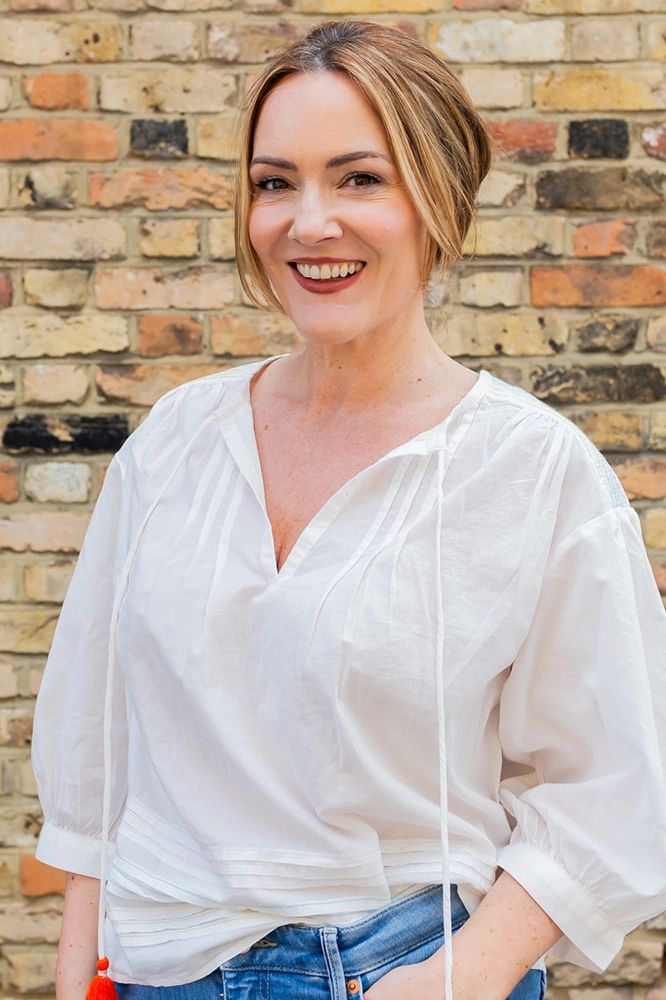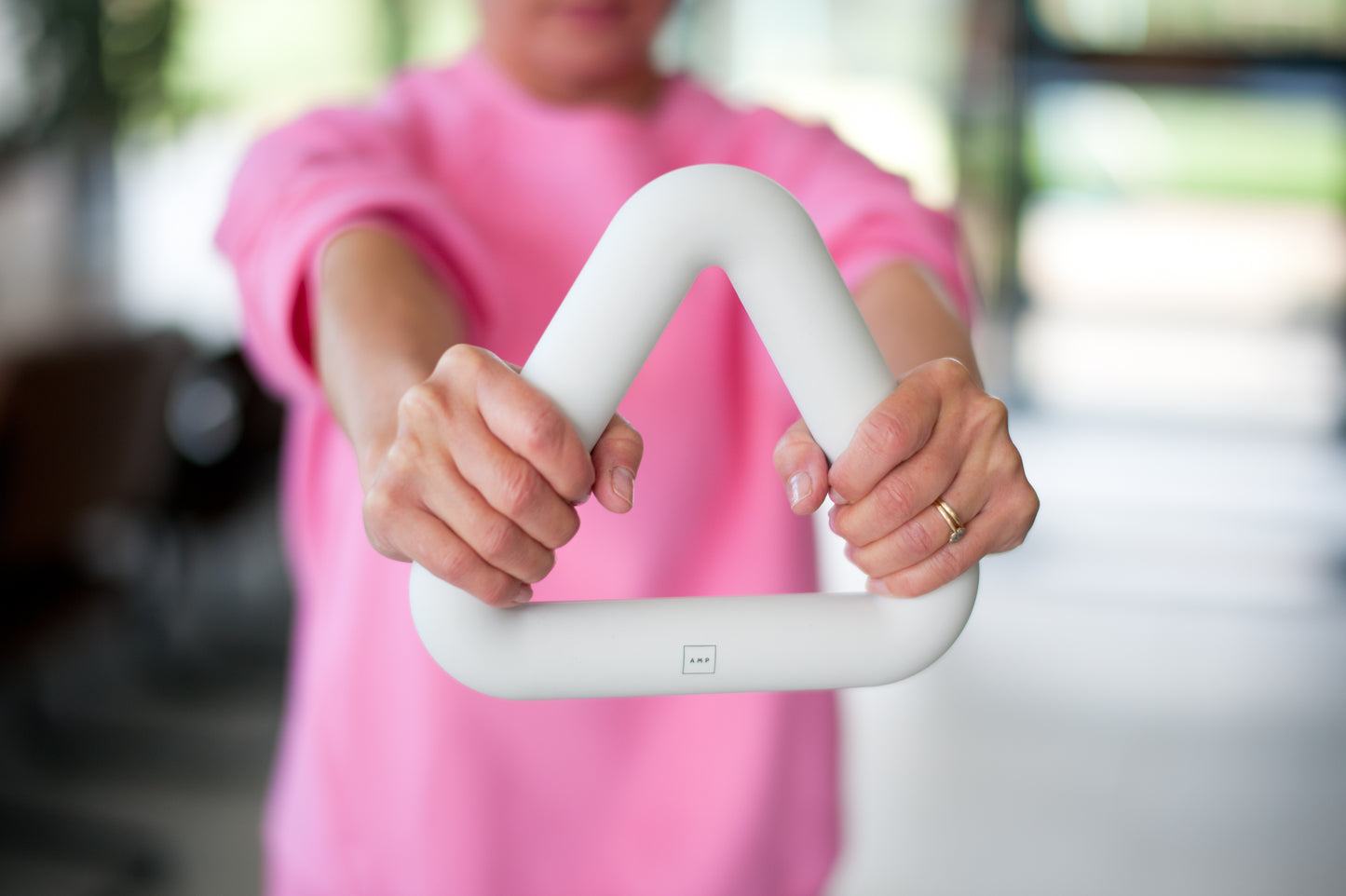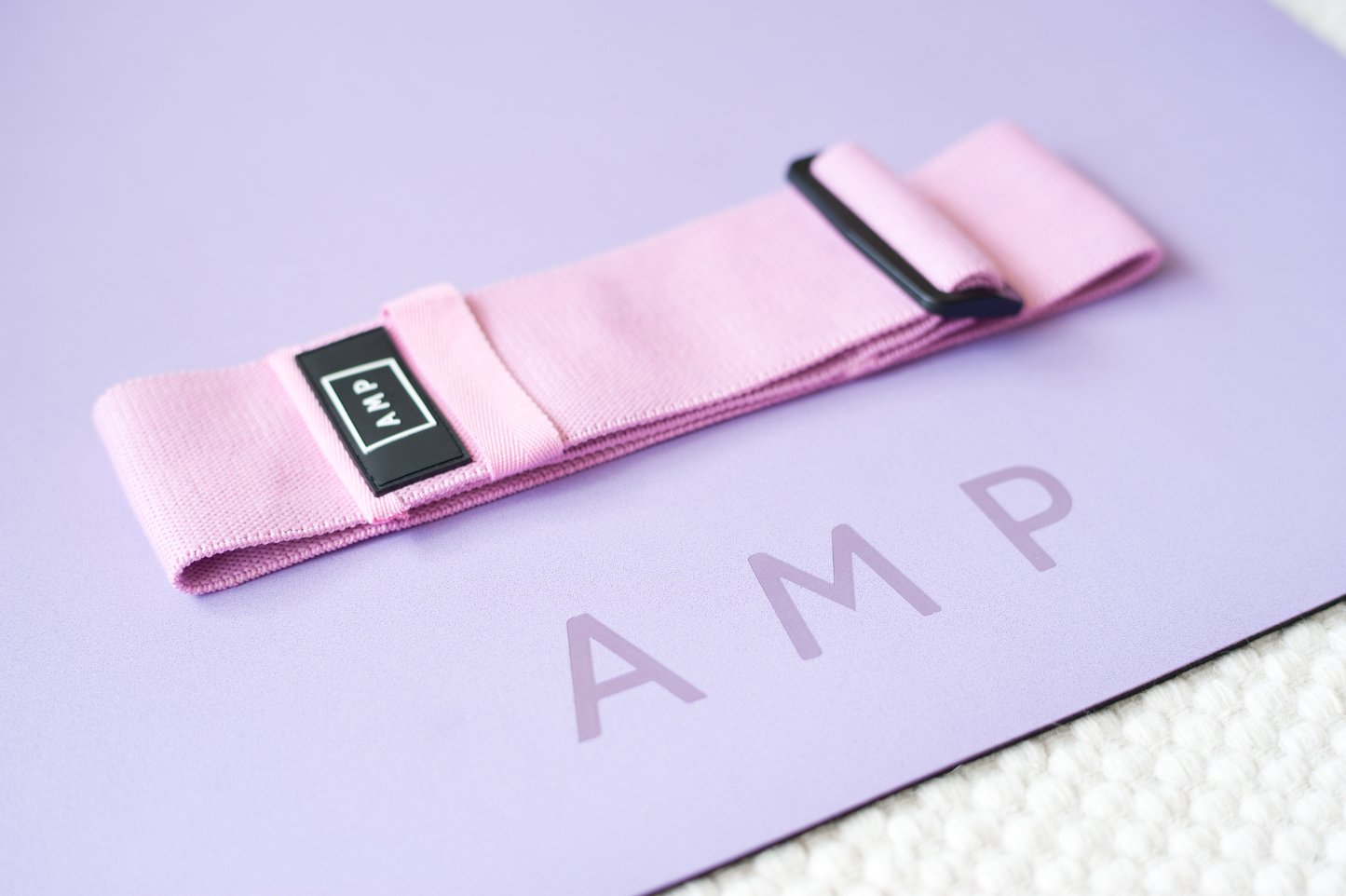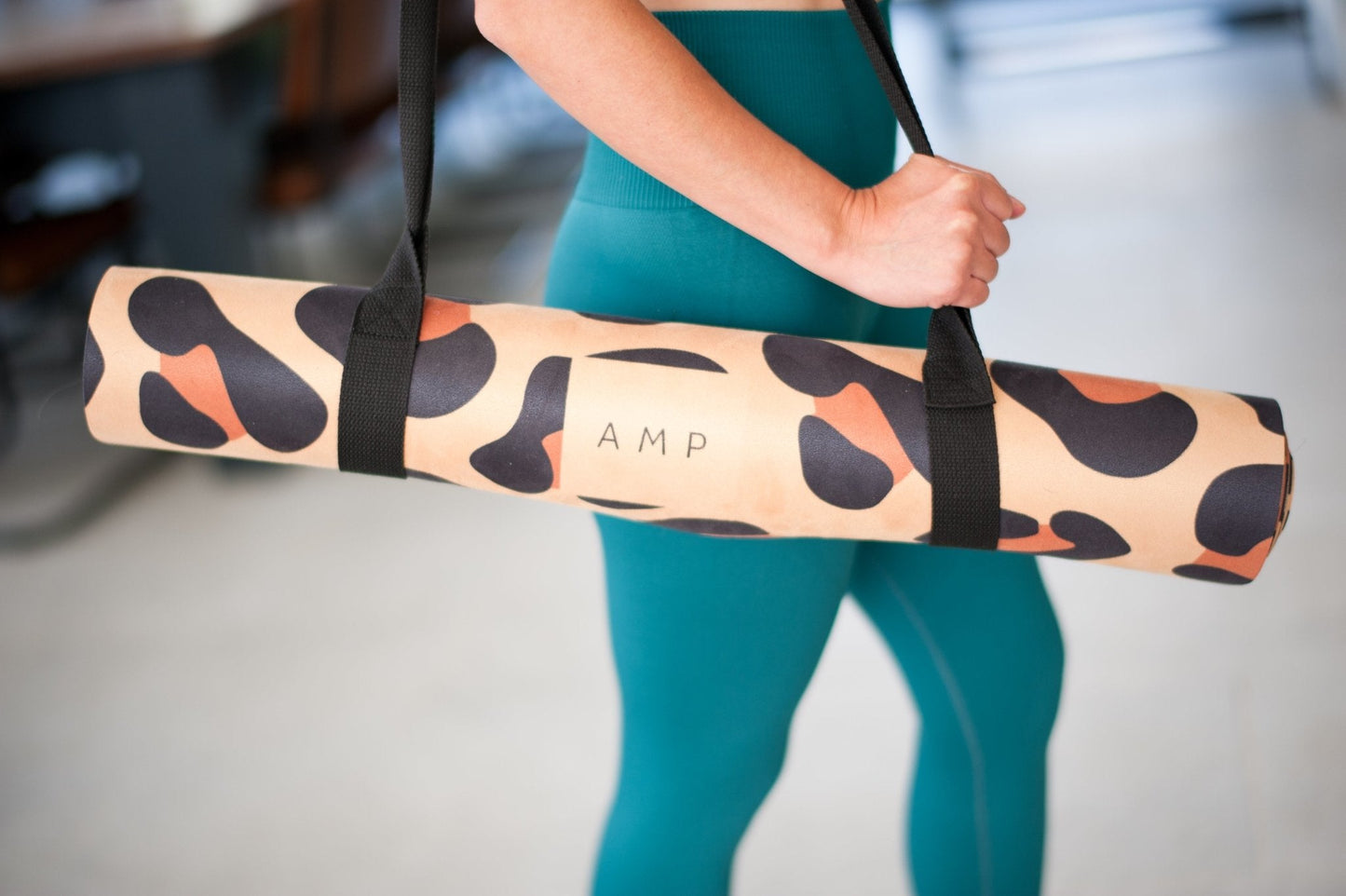When time is tight but your body’s craving movement, this energising 10-minute full-body workout is your go-to solution. Created in collaboration with food & fitness expert and personal trainer Lisa Marley, a partner at Study Active, this session is perfect for beginners looking to build strength, balance, and consistency—from the comfort of home.
Whether you're just starting out or getting back into a routine, this is your moment to pause, prioritise yourself, and move your body with purpose. Using our beautifully designed, functional Amp Wellbeing equipment, this routine helps increase intensity at your pace. Start with body weight and add resistance as you grow stronger. It’s all about building confidence through progress.
Why It Works
This is a low-impact, high-benefit workout designed to fit into real life. In just 10 minutes, you’ll work all the major muscle groups, activate your core, and boost your energy—no gym required. It’s also a fantastic foundation to build consistency and reconnect with your body through mindful, intentional movement.
Warm-Up (1–2 Minutes)
Get your body ready to move and prevent injury by easing into the session:
- Arm Circles – Loosen tight shoulders
- Arm Swing & Pull – Open up the chest
- Leg Swings – Improve hip mobility and flexibility
The Workout: Full-Body Strength and Stability (8 Minutes)
Each of these beginner-friendly moves can be performed with or without weights. As you build strength and confidence, incorporate your favourite Amp dumbbells, ankle wrist weights or Weighted Pilates balls to elevate the challenge.
Start by performing each exercise for 10–12 reps (or 30 seconds per side for unilateral movements like lunges). Do 1 round for a 10-minute workout. As your confidence and strength grow, increase to 2–3 rounds, We recommend using the 2.5kg/5kg pair Amp dumbbells or 3kg pair weighted Pilates balls to increase intensity.
If you're just getting started, begin with body weight only and focus on form and breath control. Once the movements feel comfortable and stable, introduce 1–2kg weights, increasing as your strength improves.
1. Suitcase Squats
Targets: Glutes, hamstrings, quads, core
Holding 2.5kg weighted bars, stand with feet shoulder-width apart, arms at your sides.
- Lower your hips back and down like you’re sitting in a chair.
- Keep your chest lifted and knees aligned over toes.
- Press through your heels to return to standing.
Beginner Tip: Keep hands on your hips for balance.
Progression: Hold a dumbbell in each hand at your sides (like carrying a suitcase).
Start with: 10–12 reps.
2. Knee Lifts
Targets: Core, hip flexors, balance
Stand tall, engage your core, and hold your dumbbells steady in your hands.
- Lift one knee to hip height, hold for a moment, then lower.
- Switch sides and repeat, moving with control.
Beginner Tip: Place hands on your hips or out to the sides for stability
Progression: Hold a light weight in each hand or add wrist/ankle weights.
Start with: 10 reps per side.
3. Deadlifts
Targets: Hamstrings, glutes, lower back
Stand tall with feet hip-width apart, hold your 2.5kg dumbbells in each hand.
- Hinge at the hips (not waist), keeping your back flat.
- Lower the weights (or hands) to mid-shin, slight bend in knees.
- Squeeze glutes to return to standing.
Beginner Tip: Practice first with no weights to master the hip hinge.
Progression: Add Amp dumbbells and increase load gradually.
Start with: 10–12 reps.
4. Side Lunges
Targets: Inner and outer thighs, glutes, hips
Step your right foot out to the side, holding your dumbells in your hands.
- Bend your right knee and push hips back, keeping left leg straight.
- Return to start and repeat on the other side.
Beginner Tip: Step shorter to start and build deeper range over time.
Progression: Hold a dumbbell at your chest or one in each hand, increase the weight as you progress.
Start with: 8–10 reps per side.
5. Reverse Lunges
Targets: Glutes, quads, hamstrings, core
Step one foot back and lower your back knee toward the floor, holding the weights in your hands.
- Keep your front knee stacked over your ankle.
- Push through the front heel to return to standing.
Beginner Tip: Hold onto a chair or wall for balance if needed.
Progression: Add dumbbells at your sides or a single weight at your chest.
Start with: 8 reps per side.
6. Forward Lunges
Targets: Quads, glutes, calves, balance.
Holding your weights in your hands, step forward with one foot and lower into a lunge.
- Keep your chest upright and both knees at 90 degrees.
- Push off the front foot to return to start.
Beginner Tip: Keep movements small and controlled.
Progression: Add Amp dumbbells to increase resistance.
Start with: 8 reps per side.

7. Bent-Over Row
Targets: Upper back, shoulders, arms
Hinge at the hips with a flat back, knees slightly bent.
- Hold weights or Weighted Pilates balls, palms facing in.
- Pull the weights toward your ribs, elbows close to your body.
- Squeeze shoulder blades, then lower slowly.
Beginner Tip: Start with light weights and perfect your posture.
Progression: Increase dumbbell weight or time under tension.
Start with: 10–12 reps.
8. Skull Crusher
Targets: Triceps, shoulders
Lie down (on a mat or bench) with weights extended above your head.
- Keep elbows in as you lower the weights toward your forehead.
- Pause, then press the weights back up.
Beginner Tip: Use 1–2kg dumbbells or Pilates balls to begin.
Progression: Increase reps or weight slowly.
Start with: 10–12 reps.
9. Chest Press
Targets: Chest, shoulders, triceps
Lie on your back, feet flat on the floow and hold your weights at chest level.
· Press your arms straight up.
- Lower slowly and repeat.
Beginner Tip: Focus on steady control through the full range.
Progression: Increase weight or try with resistance bands.
Start with: 10–12 reps.

10. Pec Fly
Targets: Chest, shoulders
Lie down holding your weights directly above your chest.
- With a slight bend in your elbows, open arms wide
- Bring weights back together at the top
Beginner Tip: Start with low weight to avoid shoulder strain.
Progression: Add more weight or pause at the bottom of the movement.
Start with: 8–10 reps.
11. Dumbbell Crunches
Targets: Core, upper abs
Lie on your back with knees bent, hold a weight at your chest.
- Engage your core and lift your shoulders off the mat.
- Lower slowly and repeat.
Beginner Tip: No weight needed to start—just focus on form.
Progression: Add weight once movement feels solid.
Start with: 10–12 reps.
12. Side Plank (Left & Right)
Targets: Core, obliques, shoulders
Lie on your side, elbow under shoulder and stack your feet and lift hips, keeping your body in a straight line.
- Hold for time, then switch sides
Beginner Tip: Drop your bottom knee to the floor for extra support.
Progression: Extend the hold (start at 15–20 seconds, build to 30+).
Start with: 15–30 seconds per side.
Cool Down (1–2 Minutes)
- Hamstring Stretch – Reach forward and lengthen the back of your legs
- Deep Breathing – Relax, reset, and return to your day feeling strong
Want to follow along with Lisa? Watch the full workout on YouTube here.
Meet Your Trainer: Lisa Marley
Lisa Marley is a certified personal trainer, health & wellness coach, and trained chef passionate about plant-based living and holistic wellbeing. She specialises in behavioural change coaching—helping clients set realistic goals, overcome obstacles, and develop strategies for lasting success.
Her 30-minute personal training sessions, offered online and in-person, are designed to maximise efficiency while fostering consistency. Lisa combines movement with mindful nutrition to help you feel energised, strong, and empowered—body and mind.
“My ultimate aim is to optimise your body’s efficiency, reduce inflammation, enhance muscle responsiveness, and boost your performance—so you can thrive today and into the future.” – Lisa Marley
Why This Workout Belongs in Your Routine
- Quick, convenient, and accessible—perfect for busy days.
- Builds strength, balance, and coordination.
- Beginner-friendly, with room to grow using Amp resistance tools.
- Ideal for starting (or restarting) your fitness journey.
This is fitness designed for real life—with equipment that inspires you to move every day. Wherever you are in your wellness journey, Amp is here to support you with tools that are as functional as they are beautiful.
Ready to get moving? Explore our full range of premium fitness equipment to bring the gym home—stylish tools to elevate your workouts, at home or in the studio.
> Shop the Collection
> Workout Centre – More Free Routines





















































